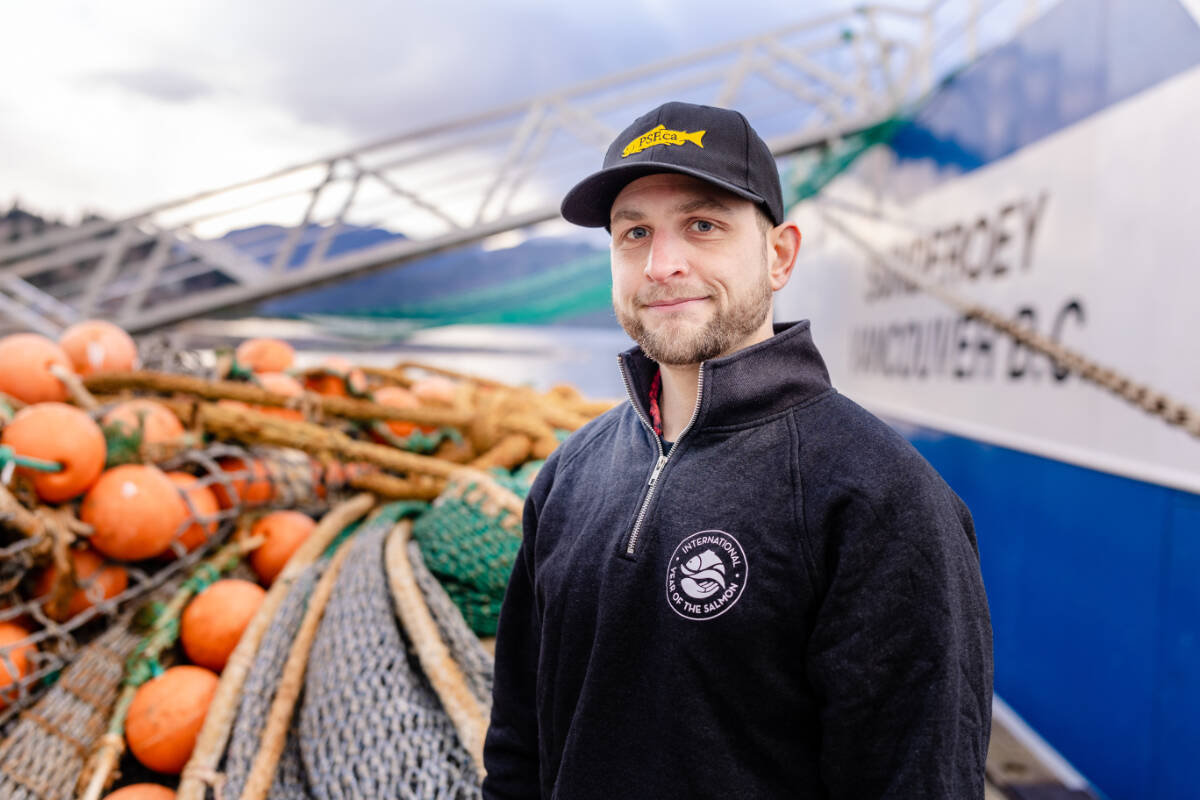The are many unknowns about the life of salmon in the open ocean, but new research is helping unravel why these fish may be struggling in warming seas.
Christoph Deeg, a researcher with the Pacific Salmon Foundation, joined the winter 2019 International Gulf of Alaska Expedition to study the interrelationship between ocean conditions, pathogen loads, and gene expression of salmon, and to test new analytical techniques. A study from his work on this trip, titled Way out there: Pathogens, health, and condition of overwintering salmon in the Gulf of Alaska, was published on Feb. 24 in the journal FACETS.
The late winter is the perfect time to study the factors affecting salmon survival, said Deeg.
“In the winter, primary production, meaning the growth of phytoplankton that supports the entire ecosystem, is very limited,“ he said. “The theory is that the winter is the limiting time when salmon are experiencing hardship, and at this time of year you would be able to see what factors are limiting their survival.”
The Gulf of Alaska Expedition helped fill knowledge gaps about salmon behaviour and distribution in these colder, less-productive months.
“We didn’t really know if salmon are making it through winter, feeding rapidly, if they’re starving, or just hunkering down,” he said.
The researchers found that instead of being distributed evenly, salmon form large aggregations as they follow food sources; they seem to be attracted to oceanographic features, such as eddies, featuring more phytoplankton able to support a food chain.
On the research vessel, Deeg dissected caught salmon and collected tissue samples from them. These samples were frozen to preserve the genetic material they contain — not only of the fish, but also of dozens of pathogens living inside of them.
These samples later were analyzed in a lab using polymerase chain reaction (PCR) — a technology that gained renown for its use during the COVID-19 pandemic — to identify the pathogens in each. A sophisticated “high throughput” system was used, allowing over a thousand different tests to be performed at once.
“It enables us to basically do a COVID test for 96 fish, but not just for one pathogen, like in the case of COVID, but for 47 different pathogens, all at the same time,” said Deeg.
Salmon in the open ocean had fewer pathogens than those found on the coast. This means either salmon recover from infection after leaving the coast, or these diseases are so costly that infected fish die before reaching the open ocean, he said.
The pathogens found in the open ocean appear to be transmitted there, from prey or between salmon.
Also analyzed were patterns of gene expression for 90 salmon genes associated with their response to stressors.
Rather than seeing certain genes expressed in relation to certain stressors, salmon showed a tendency to reduce the expression of many “non-essential” genes.
“Basically, these fish are trying to save energy and not do things that they don’t need to get by,” he said.
But this poses a trade-off, as fish with this expression pattern generally had higher levels of opportunistic pathogens.
“In these fish, when they down-regulate genes, like their immune system, then these pathogens have an easier time, so there are more of them, which obviously, is not necessarily good for the fish,” said Deeg.
The salmon showing this pattern of expression often were found where prey was less abundant.
“That suggests they’re doing this because they weren’t getting enough food out there,” he said.
At the time of the sampling, there was a marine heatwave, meaning high water temperatures may have affected the food chain, reducing the availability of food. As salmon are cold-blooded, they also expend more energy in warmer water.
“We saw this pattern that there are all these factors coming together — it looks like in a warming ocean, salmon are struggling because they’re not getting the food they need, and they need to use more energy,” he said.
As the study represents a “snapshot in time,” rather than a measured trend, researchers cannot be sure this is why fewer salmon are returning from the ocean.
Better understanding this dynamic is one of the goals of the 2022 Pan-Pacific Winter High Seas Expedition, a multi-vessel venture on which Deeg will be a member. On this expedition, researchers will try to attain more samples from a larger area of the ocean, to help compare trends between ocean areas of normal temperatures and warmer ones.
“If we can get enough samples from these regions, we can really nail down how how the different conditions of the ocean affect salmon,” he said.
READ ALSO: Advocates say Canada can’t save struggling B.C. salmon stocks without Alaska’s help
Northwest B.C. First Nations outraged by Alaskan interception of salmon
sean.feagan@campbellrivermirror.com
Like us on Facebook and follow us on Twitter

